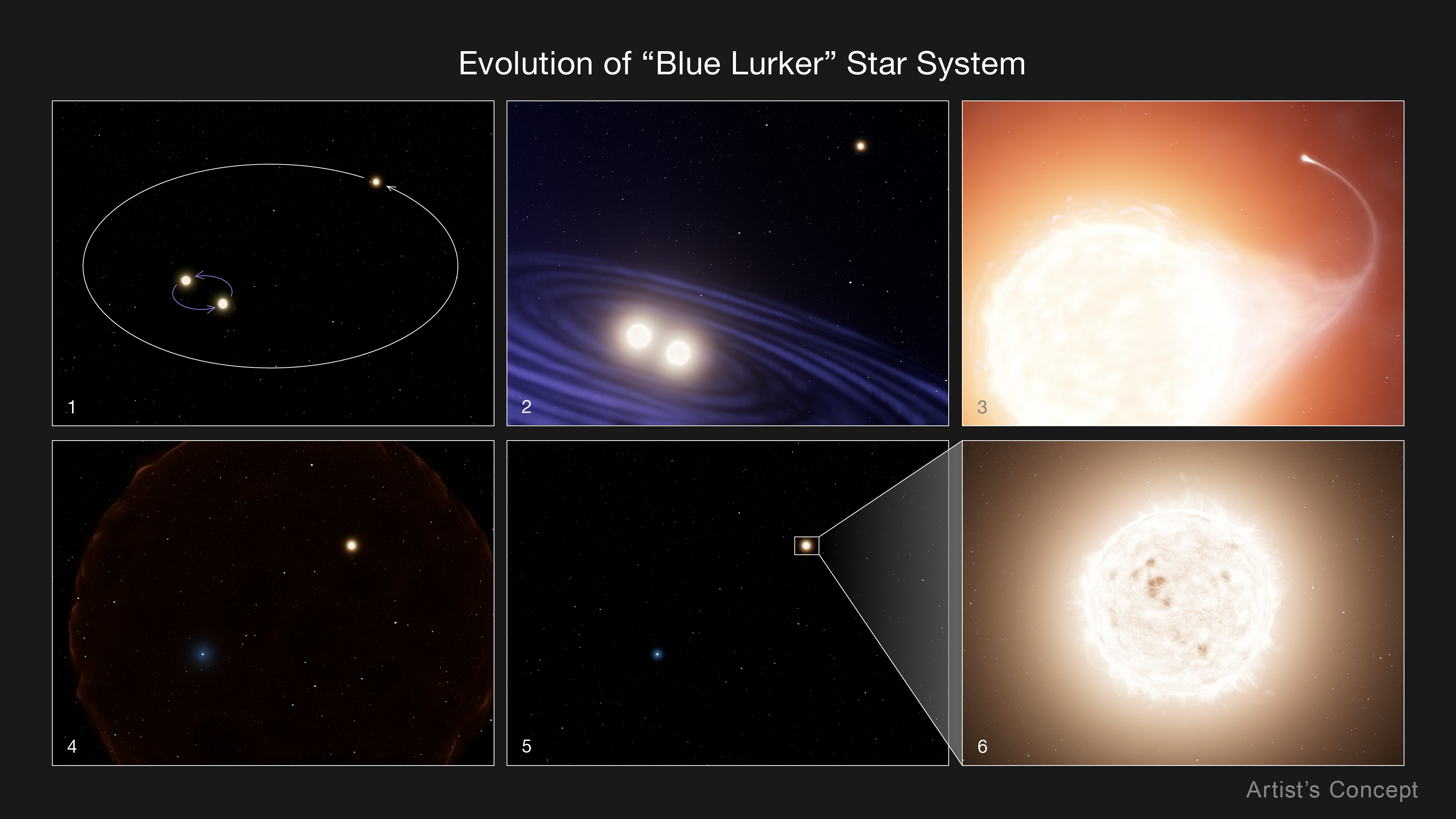
Hubble Artwork of the Evolution of "Blue Lurker" Star System
Evolution of a "Blue Lurker" Star in a Triple System Panel 1: A triple star system containing three Sun-like stars. Two are very tightly orbiting. The third star has a much wider orbit. Panel 2: The close stellar pair spiral together and merge to form one more massive star. Panel 3: The merged star evolves into a giant star. As the huge photosphere expands, some of the material falls onto the outer companion, causing the companion to grow larger and its rotation rate to increase. Panels 4-5: The central merged star eventually burns out and forms a massive white dwarf, and the outer companion spirals in towards the white dwarf, leaving a binary star system with a tighter orbit. Panel 6: The surviving outer companion is much like our Sun but nicknamed a "blue lurker." Although it is slightly brighter bluer than expected because of the earlier mass-transfer from the central star and is now rotating very rapidly, these features are subtle. The star could easily be mistaken for a normal Sun-like star despite its exotic evolutionary history.
- X
























